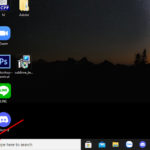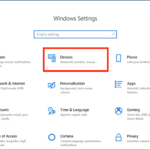Some simple ways to open Task Manager on Windows 10
How to open Task Manager on Windows 10 using the Start menu
This is the most common way to open Task Manager that most people are familiar with. You just need to hover over the Start icon and right-click. Then, the menu bar displays the tools, and you can find and click on the Task Manager option.
/fptshop.com.vn/uploads/images/tin-tuc/167243/Originals/mo-va-su-dung-task-manager-win-10.png)
How to open Task Manager on Windows 10 using the Run dialog box
- Step 1: Press the Windows + R keys, then the Run dialog box opens.
- Step 2: Enter the command “taskmgr” and then press Enter.
/fptshop.com.vn/uploads/images/tin-tuc/167243/Originals/mo-va-su-dung-task-manager-win-10-1.png)
How to open Task Manager on Windows 10 using keyboard shortcuts
You can open Task Manager with 2 keyboard shortcuts:
- Method 1: Press the Alt + Ctrl + Delete keys, then a dialog box appears, and you can find and select Task Manager.
- Method 2: You can directly open the Task Manager dialog box by pressing the Ctrl + Shift + Esc keys.
How to open Task Manager on Windows 10 using Command Prompt
Whether you have admin rights or not, you can still open Command Prompt, enter the command “taskmgr,” and then press Enter, and the Task Manager dialog box will appear.
/fptshop.com.vn/uploads/images/tin-tuc/167243/Originals/mo-va-su-dung-task-manager-win-10-4.png)
How to open Task Manager on Windows 10 using the Taskbar
You can right-click anywhere on the Taskbar, and then choose Task Manager from the toolbar that appears.
How to open Task Manager on Windows 10 using the Search Box
You can perform this computer trick by clicking on the Search Box, typing “Task Manager,” and then selecting it.
Or you can press the Windows button, search for Task Manager, and select it from the search results bar.
How to open Task Manager on Windows 10 using Cortana
In addition to the above methods, you can also refer to how to open Task Manager using Cortana. This program is developed with outstanding and diverse features.
You click on the microphone icon right next to the Search Box, say “open Task Manager,” and the dialog box will open.
Popular ways to use Task Manager on Windows 10
Use Task Manager to close non-responsive tasks
One of the most common functions of Task Manager is to close non-responsive tasks.
In the Task Manager dialog box, it displays a list of running background apps. You select and click on the task that is hanging. Finally, click the End Task button in the bottom right corner of the dialog box. At that point, the system will receive the command and close those tasks.
Use Task Manager on Windows 10 to understand running tasks
You can also monitor detailed statistics from running apps using Processes in Task Manager on Windows 10. Some information you can explore includes: how much memory an app uses, the company that developed it, how much CPU it needs, etc.
/fptshop.com.vn/uploads/images/tin-tuc/167243/Originals/mo-va-su-dung-task-manager-win-10-2.png)
Use Task Manager on Windows 10 to control running tasks
This is an extremely effective Windows 10 trick to control all running apps, including automatically start-up tasks. Through the Services section, you right-click on any app, then choose Start or Stop to start or close the app as desired.
Use Task Manager on Windows 10 to evaluate system performance
In the Performance section, it displays 4 graphic boxes respectively:
- In the CPU window, you can see the current CPU usage performance.
- In the Memory window, it shows the physical memory usage performance.
- In the Disk window, it shows the hard drive usage performance.
- Finally, the Ethernet window shows the network connection performance.
/fptshop.com.vn/uploads/images/tin-tuc/167243/Originals/mo-va-su-dung-task-manager-win-10-3.png)
Use Task Manager on Windows 10 to manage user accounts
You can also control user accounts through the task tab with the same name as Task Manager.
If you want to end someone’s work session but still saved in the memory for later login, click Disconnect.
Conclusion
Above are some easy ways to open and use Task Manager on Windows 10. Hopefully, these computer tricks can help you achieve high performance in your work. If you have any questions, please leave a comment below for our fastest support. Wish you success!




































